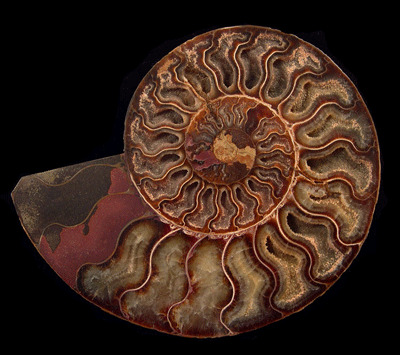
Picture a curled-up shell with unique patterns and a pearly sheen, more visible color under bright light and most beautiful under the sun. That’s an ammonite fossil, the remains of an extinct spiral-shelled cephalopod between the Jurassic Period (201 million years ago) and the Cretaceous Period (66 million years ago). With their stunning beauty, these fossils are found virtually everywhere. However, the Madagascar ammonites stand out as some of the best.
Beyond the vast stretches of coastal lines, exotic trees, and unique ecosystems lie the remains that tell us about marine beings that existed millions of years ago.
Why Ammonites from Madagascar?
If you have researched fossils, you must be familiar with Madagascar’s reputation for possessing some of the most exquisite ammonites. Due to the geological processes that buried and mineralized them, Madagascar's fossils are incredibly well-preserved. The shells often retain their intricate details and sometimes even show beautiful crystal formations compared to other locations. What sets the ammonites from Madagascar apart is their stunning colors and patterns, a result of the unique mineralization processes over millions of years.
Aesthetic Appeal: Madagascar ammonites are highly prized locally and by fossil collectors and enthusiasts worldwide. Their unique spiral shapes, vibrant colors, and intricate patterns make them popular decorative pieces. Some specimens exhibit iridescence due to mineralization, creating a stunning play of colors when viewed under light.
Historical Significance: Madagascar ammonites are also valued for their rarity, historical significance, and aesthetic appeal. Collectors often seek out specific species or well-preserved specimens; owning a piece of this ancient history can be a source of pride for many.
A Paleontological Treasure: Their exceptional preservation allows scientists to study the creature's anatomy, growth patterns, and even potential clues about their environment. These fossils act as windows into the past, helping us understand the evolution and diversity of these ancient mollusks.
Easier to Find: Compared to some rare ammonite finds, Madagascar ammonites are relatively accessible to collectors and enthusiasts. This wider availability allows more people to appreciate these incredible fossils and fosters a deeper appreciation for prehistoric life.
The Types
The ammonites in Madagascar come in various shapes and sizes, with various qualities and patterns. Some of the most coveted ammonites are usually the large ones, whose prices can go up to $500.
Cleoniceras: Cleoniceras is an ammonite genus that flourished around 100 million years ago during the Cretaceous period. Known for their beautifully ribbed and often vividly colored shells, Cleoniceras ammonites are among the most sought-after fossils by collectors and paleontologists alike.
Cleoniceras ammonites typically exhibit a planispiral (flat spiral) shell, meaning the whorls of the shell are coiled in a single plane. This creates a disk-like appearance with evenly spaced whorls.
Cranaosphinctes: Cranaosphinctes is a genus of ammonites belonging to the family Perisphinctidae, which thrived during the Jurassic period. These ancient marine mollusks are known for their distinct morphological features and provide valuable insights into the paleoenvironmental conditions of their time.
The size of Cranaosphinctes ammonites can vary significantly, with some specimens reaching several inches in diameter. A large Cranaosphinctes can cost up to hundreds of dollars.
The ammonites from Madagascar are not simply objects of research and fascination but also vestiges of a bygone era, often reminding us of the sublime effects of nature and time. Buried Treasure Fossil provides you with many ammonites—varying shoes and sizes—at the best possible prices and guarantees of authenticity. Add Madgascar ammonites to your collection or your geodecor.










